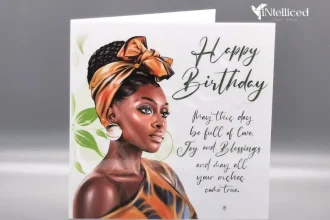Culture is a vast and complex construct that encompasses the beliefs, practices, arts, laws, morals, customs, capabilities, and habits of the individuals in these groups. The beauty and diversity of cultural expressions lie in their ability to offer a myriad of perspectives, experiences, and interpretations of life. Cultural expressions are manifestations of human creativity and intellect, represented in countless forms such as art, music, dance, literature, traditions, and rituals. Each culture provides a unique lens through which the world can be viewed, understood, and appreciated.
The significance of cultural diversity cannot be overstated. It enriches societies by fostering mutual respect, understanding, and cooperation among different cultural groups. It also contributes to the vibrancy and dynamism of human life, providing a vast repository of ideas, knowledge, and wisdom that can be drawn upon to address contemporary global challenges.
Artistic Expressions
Art is a profound medium through which cultural values, beliefs, and histories are conveyed. It includes various forms such as visual arts, sculpture, painting, and crafts, each reflecting the unique aesthetic sensibilities of different cultures.
Visual Arts
Visual arts encompass a wide range of creative expressions, from ancient cave paintings to modern digital art. Each form of visual art is influenced by the cultural context in which it is created.
For example, the intricate patterns of Islamic geometric art reflect the culture’s emphasis on mathematical precision and abstract beauty, while the vibrant colors and dynamic forms of African art often convey communal values and spiritual beliefs.
Sculpture
Sculpture is another powerful form of cultural expression. From the colossal statues of ancient Egypt to the minimalist forms of contemporary sculpture, this art form captures the essence of the human experience. In cultures around the world, sculptures serve not only as artistic creations but also as symbols of cultural identity and historical continuity. The terracotta warriors of China, for instance, are a testament to the military prowess and artistic ingenuity of the Qin Dynasty.
Painting
Painting, as a cultural expression, offers a window into the soul of a society. The Renaissance paintings of Europe, with their emphasis on humanism and realism, reflect the cultural shift towards individualism and scientific inquiry. In contrast, the dreamlike landscapes of Chinese brush paintings encapsulate the harmonious relationship between humanity and nature, a central tenet of Daoist philosophy.
Crafts
Traditional crafts, including pottery, weaving, and jewelry-making, are rich repositories of cultural knowledge and skill. These crafts often involve techniques passed down through generations, embodying the cultural heritage of a community. The intricate beadwork of the Maasai people of Kenya, for example, not only serves an aesthetic function but also communicates social status and cultural affiliation.
Musical Expressions
Music is a universal language that transcends cultural boundaries, yet it is deeply rooted in the specific cultural contexts from which it emerges. Each musical tradition offers unique insights into the values, emotions, and historical experiences of a culture.
Traditional Music
Traditional music, often referred to as folk music, is an integral part of cultural identity. It is passed down orally from generation to generation, preserving the stories, rituals, and communal experiences of a people. The Celtic folk music of Ireland, with its lively jigs and mournful ballads, evokes the rugged landscapes and tumultuous history of the Irish people. Similarly, the complex rhythms and harmonies of West African drumming reflect the region’s rich cultural tapestry and communal values.
Classical Music
Classical music traditions, such as those of Europe, India, and China, have developed over centuries and are characterized by their intricate structures and sophisticated compositions. European classical music, from the Baroque to the Romantic periods, has profoundly influenced global music traditions, offering a rich repertoire of symphonies, operas, and concertos. Indian classical music, with its raga system and improvisational nature, embodies the spiritual and philosophical depths of Indian culture.
Popular Music
Popular music, including genres such as jazz, rock, hip-hop, and pop, often reflects contemporary cultural trends and social issues. Each genre has its roots in specific cultural contexts but has also transcended these origins to achieve global popularity. Jazz, with its origins in African American communities, is a testament to the resilience and creativity of a marginalized culture. Hip-hop, born in the streets of New York City, has become a global phenomenon, giving voice to the experiences and aspirations of youth around the world.
Dance
Dance is a dynamic form of cultural expression that combines movement, rhythm, and emotion. It serves as a powerful means of storytelling and cultural preservation.
Traditional Dance
Traditional dances, such as the flamenco of Spain, the hula of Hawaii, and the bharatanatyam of India, are deeply rooted in the cultural histories and spiritual beliefs of their respective societies. These dances often involve elaborate costumes, intricate movements, and symbolic gestures that convey cultural narratives and values. The Maori haka of New Zealand, for instance, is a powerful war dance that embodies the strength and unity of the Maori people.
Contemporary Dance
Contemporary dance, including styles such as modern dance and hip-hop, often reflects the fluid and evolving nature of cultural identities in a globalized world. These dance forms are characterized by their emphasis on individuality, creativity, and social commentary. Modern dance, pioneered by figures like Martha Graham and Isadora Duncan, breaks away from traditional ballet to explore new forms of movement and expression. Hip-hop dance, with its roots in urban street culture, has become a global phenomenon, influencing and being influenced by diverse cultural traditions.
Literature
Literature is a profound means of cultural expression, encompassing oral traditions, poetry, prose, and drama. It captures the essence of human experience, offering insights into the values, struggles, and aspirations of different cultures.
Oral Traditions
Oral traditions are among the oldest forms of literature, preserving the history, myths, and wisdom of cultures through storytelling, chants, and songs. These traditions are vital for the transmission of cultural knowledge and identity. The epic poems of ancient Greece, such as the Iliad and the Odyssey, are not only literary masterpieces but also repositories of Greek cultural and historical memory. Similarly, the griot tradition in West Africa involves oral historians who preserve and recount the histories of their people through storytelling and music.
Poetry
Poetry is a universal form of literary expression that transcends cultural boundaries while reflecting the unique sensibilities of different cultures. The haiku of Japan, with its focus on nature and brevity, captures the essence of Japanese aesthetics and philosophy. The ghazals of Persian and Urdu poetry, with their themes of love and mysticism, reflect the rich cultural and spiritual heritage of the Middle East and South Asia.
Prose and Drama
Prose and drama encompass a wide range of literary forms, including novels, short stories, and plays. These forms offer a deep exploration of human experiences and cultural contexts. The novels of Charles Dickens provide a vivid portrayal of Victorian England, shedding light on social issues such as poverty and industrialization. The magical realism of Latin American literature, exemplified by Gabriel García Márquez, blends the fantastical with the everyday, reflecting the region’s complex cultural and historical landscape.
Traditions and Rituals
Traditions and rituals are vital expressions of cultural identity and continuity. They encompass religious ceremonies, festivals, rites of passage, and daily practices that reflect the values and beliefs of a culture.
Religious Ceremonies
Religious ceremonies, such as the Hindu festival of Diwali, the Christian celebration of Easter, and the Islamic observance of Ramadan, play a central role in the cultural life of communities. These ceremonies often involve elaborate rituals, prayers, and communal gatherings that reinforce social bonds and spiritual beliefs. The Japanese tea ceremony, with its emphasis on harmony, respect, and tranquility, reflects the cultural and spiritual values of Zen Buddhism.
Festivals
Festivals are vibrant expressions of cultural identity, celebrating historical events, seasonal changes, and communal values. The Carnival of Brazil, with its colorful parades, music, and dance, is a celebration of cultural diversity and resilience. The Chinese New Year, marked by dragon dances, fireworks, and family gatherings, reflects the importance of tradition and renewal in Chinese culture.
Rites of Passage
Rites of passage, such as birth ceremonies, coming-of-age rituals, weddings, and funerals, mark significant transitions in the life cycle of individuals and communities. These rituals often involve symbolic acts, traditional attire, and communal participation, reinforcing cultural continuity and social cohesion. The Bar and Bat Mitzvah ceremonies in Judaism, for example, mark the transition from childhood to adulthood, emphasizing the importance of religious and cultural identity.
Daily Practices
Daily practices, such as food preparation, dress, and social interactions, also reflect cultural values and traditions. The Mediterranean diet, with its emphasis on fresh ingredients, communal meals, and moderation, reflects the cultural and environmental context of the Mediterranean region. Traditional dress, such as the kimono in Japan and the sari in India, embodies cultural aesthetics and social norms.
Recommended: 11 Unique Things You Should Collect When Traveling
Language and Communication
Language is a fundamental aspect of cultural expression, shaping the way people communicate, think, and perceive the world. It encompasses spoken and written languages, as well as non-verbal forms of communication.
Spoken and Written Languages
The diversity of languages around the world reflects the rich tapestry of human cultures. Each language offers a unique way of understanding and describing the world, shaped by the historical, geographical, and social contexts of its speakers. The indigenous languages of the Americas, such as Quechua and Navajo, carry the cultural knowledge and traditions of their communities. The classical languages of Sanskrit, Latin, and Classical Chinese have profoundly influenced the intellectual and cultural histories of their respective civilizations.
Non-Verbal Communication
Non-verbal communication, including body language, gestures, and facial expressions, also plays a crucial role in cultural expression. These forms of communication often convey cultural norms and values that are not easily articulated through words. The use of eye contact, for example, varies significantly across cultures, reflecting different social norms and expectations. In many Asian cultures, avoiding direct eye contact is a sign of respect, while in Western cultures, it is often associated with honesty and confidence.
Culinary Arts
Food is a vital aspect of cultural expression, reflecting the history, geography, and values of a community. The culinary arts encompass a wide range of practices, from traditional recipes and cooking techniques to contemporary culinary innovations.
Traditional Cuisine
Traditional cuisine is a repository of cultural knowledge and practices, passed down through generations. It reflects the agricultural practices, climate, and resources of a region, as well as the cultural and social values of its people. The Mediterranean diet, with its emphasis on olive oil, fresh vegetables, and seafood, reflects the agricultural abundance and communal values of the Mediterranean region. The complex flavors and techniques of Chinese cuisine, from the spicy dishes of Sichuan to the delicate dim sum of Cantonese cooking, embody the regional diversity and culinary sophistication of China.
Fusion Cuisine
Fusion cuisine, which blends elements of different culinary traditions, reflects the dynamic and interconnected nature of contemporary culture. It offers a creative and innovative approach to food, drawing on diverse cultural influences to create new and exciting flavors. The rise of sushi burritos and Korean tacos, for example, reflects the blending of Japanese, Mexican, and Korean culinary traditions, offering a unique gastronomic experience.
Culinary Festivals
Culinary festivals, such as the Italian Sagra, the Thai Songkran Festival, and the American Thanksgiving, celebrate cultural identity and community through food. These festivals often involve communal cooking and eating, reinforcing social bonds and cultural traditions. The Italian Sagra, for instance, is a local festival celebrating regional foods and traditions, often involving outdoor feasts, music, and dancing.
Architecture and Urban Planning
Architecture and urban planning are powerful forms of cultural expression, shaping the built environment and reflecting the values, beliefs, and aspirations of a society.
Traditional Architecture
Traditional architecture, such as the pagodas of East Asia, the adobe houses of the American Southwest, and the thatched cottages of Europe, reflects the cultural and environmental context of a region. These architectural forms often incorporate local materials and techniques, embodying the cultural heritage and ecological knowledge of a community. The intricate woodwork and curved roofs of Japanese temples, for example, reflect the cultural and spiritual values of harmony and balance.
Contemporary Architecture
Contemporary architecture, including styles such as modernism, postmodernism, and sustainable design, reflects the evolving cultural and technological landscape of the modern world. These architectural forms often emphasize innovation, functionality, and environmental sustainability. The sleek, minimalist designs of modernist architecture, exemplified by the works of Le Corbusier and Mies van der Rohe, reflect the cultural shift towards simplicity and efficiency. Sustainable architecture, with its focus on renewable materials and energy efficiency, embodies the growing cultural awareness of environmental issues.
Urban Planning
Urban planning, encompassing the design and organization of cities and communities, also reflects cultural values and social priorities. The grid layout of ancient Roman cities, for example, reflects the cultural emphasis on order and efficiency. The organic, pedestrian-friendly design of many European cities, with their narrow streets and public squares, reflects the cultural values of community and accessibility. In contrast, the sprawling, car-dependent layout of many American cities reflects the cultural values of individualism and mobility.
Media and Digital Culture
Media and digital culture are increasingly important forms of cultural expression, shaping the way people communicate, access information, and engage with the world.
Traditional Media
Traditional media, including newspapers, radio, and television, have long played a crucial role in shaping cultural narratives and public opinion. These media forms often reflect the cultural values and social issues of their time. The golden age of radio in the early 20th century, for example, reflects the cultural shift towards mass communication and entertainment. Television, with its visual and auditory capabilities, has become a powerful medium for cultural expression and social commentary.
Digital Media
Digital media, including social media, blogs, and online platforms, have transformed the landscape of cultural expression. These media forms offer new opportunities for creativity, interaction, and participation, enabling individuals and communities to share their cultural expressions with a global audience. Social media platforms like Instagram and TikTok, for example, have become vibrant spaces for cultural expression, allowing users to share their art, music, and stories with a global community. Blogs and online forums offer platforms for cultural dialogue and exchange, fostering mutual understanding and collaboration across cultural boundaries.
Video Games and Virtual Reality
Video games and virtual reality are emerging forms of cultural expression, offering immersive and interactive experiences that reflect the creativity and technological advancements of contemporary culture. Video games, such as The Legend of Zelda and Assassin’s Creed, often draw on diverse cultural histories and mythologies, creating rich and engaging virtual worlds. Virtual reality, with its potential for immersive storytelling and simulation, offers new possibilities for cultural expression and exploration.
Conclusion on The Beauty and Diversity of Cultural Expressions
The beauty and diversity of cultural expressions are a testament to the creativity, resilience, and ingenuity of humanity. Each form of cultural expression, from art and music to literature and cuisine, offers a unique lens through which to view and appreciate the richness of human experience. By embracing and celebrating cultural diversity, we can foster mutual understanding, respect, and collaboration, creating a more inclusive and vibrant world.
The significance of cultural diversity extends beyond the aesthetic and intellectual; it is essential for the sustainable development and well-being of societies. Cultural diversity enriches our lives, broadens our perspectives, and strengthens our social fabric. It is a source of innovation and creativity, driving progress and inspiring solutions to global challenges.
In a rapidly globalizing world, it is crucial to recognize and preserve the diversity of cultural expressions, ensuring that all voices and traditions are valued and respected. By doing so, we can build a more just and equitable world, where the beauty and diversity of cultural expressions are cherished and celebrated

















